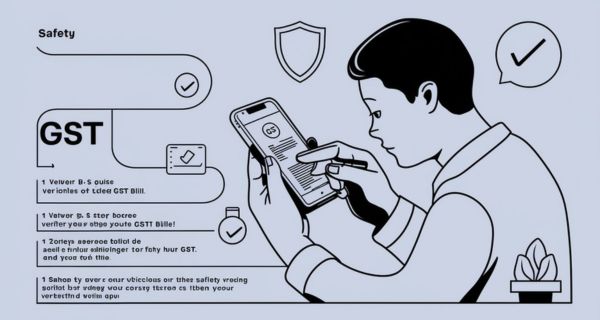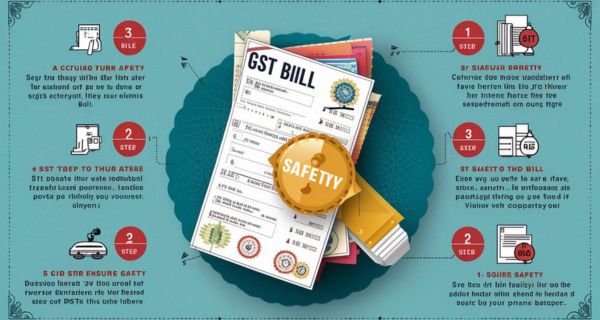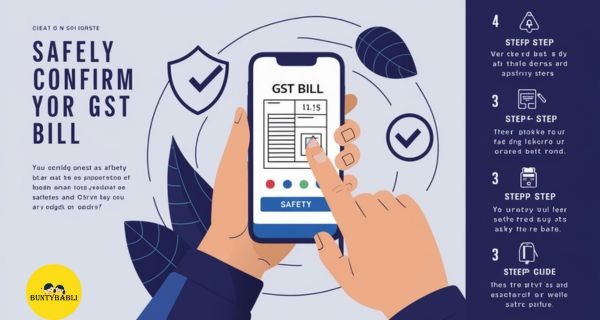It was in 2017 that India introduced the Goods and Services Tax (GST- Bill), which is a game-changer that has brought all the convoluted tax systems existing in the country under one umbrella. Through combining multiple duties into a single streamlined structure, it has promoted transparency, made it easier for businesses to operate, and simplified taxation for corporations as well as individuals. However, any major system can be vulnerable to fraud. The first step towards protecting oneself from such risks is to know how to ascertain whether your GST bill is real or not. GST bills are not simply receipts; they are important documents that form the basis of claiming Income Tax Credits and settling other financial liabilities.
If a fraudulent GST bill is identified, this might lead to serious issues including financial losses and legal disputes. Therefore, verifying these bills becomes a matter of utmost importance. Herein lies an analysis of what you should do so as to ensure your GST bill is genuine and escape scams.

Check the GSTIN
The first layer of security when checking your GST bill involves looking up the supplier’s Goods and Services Tax Identification Number (GSTIN). Every person registered under GST possesses this code – it consists of fifteen characters comprising letters and numbers. More than just a number, the GSTIN also conveys vital information like the state code, PAN of supplier and a specific registration number.
On the official GST portal, by cross-checking GSTIN, you can confirm if it corresponds with the details of the registered supplier. Such validation ensures that you are dealing with a genuine supplier who has been duly registered. If there exists any form of inconsistency or inaccuracy regarding this number then more steps have to be taken.
Validate Invoice Number and Date
Equally crucial aspects to look out for in a GST bill are invoice number and date; they should be scrutinized closely. Each invoice must have a unique number assigned to it and its ordering should follow the billing pattern adopted by suppliers. Similarly, on an invoice date must fall within legally allowed period for filing under taxation goods service tax act 2017 under which invoices are prepared.
Unusual occurrences in either invoice numbers or dates may be signs of manipulation or fraudulence. Details like numbering patterns being similar from one occasion to another as well as dates covering periods that were actual transaction took place ought to be checked carefully when examining these details Any variation from this expectation should necessitate further investigation.

Confirm Invoice Value and Tax Amount
To check that your GST bill is genuine, one of the most important thing you ought to do is confirm whether the invoice value and tax amount are correct. These are not just figures as they are derived after applying the relevant GST rate on goods or services. To ascertain any such accuracy, a GST calculator available on the GST portal can be used.
Through this device, data required can be inputted to satisfy us if indeed tax has been calculated in a proper manner. The wrong numbers indicated in that statement might either point out a document whose contents have been manipulated or indicate an error occurred which could lead to serious monetary consequences.
Verify the Supplier’s Signature
Each and every GST invoice should contain a signature of the supplier or their authorized representative. This signature acts as official confirmation of the genuineness of an invoice and shows that all terms therein have been consented by both parties involved in this transaction. Therefore, it’s very critical to ensure that this signature matches with what is provided by authorities maintaining these records for GST purposes.
Once you come across an unsigned bill or one signed by an unlicensed person, then there must be something wrong with it so don’t take chances at all. A genuine signature indicates seriousness within the provider about whatever written on his/her account.

Confirming the Tax Payment
Lastly, it is very important to ascertain whether or not the tax amount indicated on the GST invoice has been paid. This can be done by checking on the GST portal the status of the payment of tax. If the supplier has submitted their GST return correctly, then payment will be visible in a record maintained at this portal.
It is necessary at this point that one verifies that goods have been recorded accurately and that your supplier has met his/her tax liabilities otherwise he/she might run into trouble- this can also be an indication that something wrong exists about a bill and you are exposed to legal and financial consequences.
Conclusion
Through these verification processes, you would save yourself from possible fraud as well as maintain transparency and security in your finances’ matters. In such an extensive system like GST, taking these steps isn’t just self-preservation; they support efforts regarding maintaining its credibility among all stakeholders. Should one ever come across any suspicious GST bill, it’s important to report directly through the toll free number provided by authorities or via gst.gov.in website.
Also Read: How to become a fashion designer

